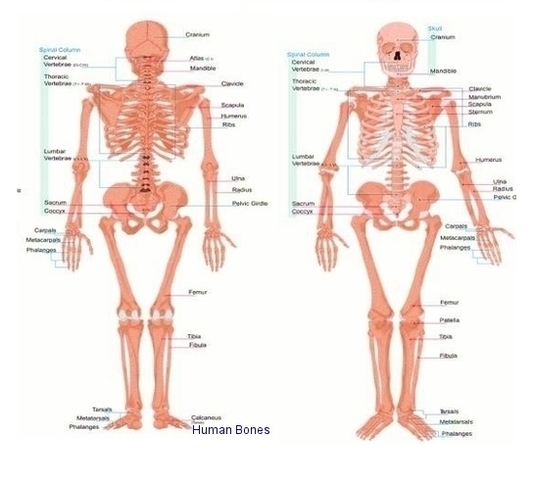These bones are arranged into two major divisions: the axial skeleton and the appendicular skeleton. The axial skeleton runs along the body’s midline axis and is made up of 80 bones in the following regions: The appendicular skeleton is made up of 126 bones in the folowing regions:
Bones serve several vital functions: Bones provide a frame to support the body. Muscles, tendons, and ligaments attach to bones. Without anchoring to bones, muscles could not move the body. Some bones protect the body’s internal organs. For instance, the skull protects the brain, and the ribs protect the heart and lungs.
The bone mass in the skeleton makes up about 14% of the total body weight (ca. 10–11 kg for an average person) and reaches maximum density around age 21. The human skeleton can be divided into the axial skeleton and the appendicular skeleton. The axial skeleton is formed by the vertebral column, the rib cage, the skull and other associated bones.

human bones
Posted inDiagrams


